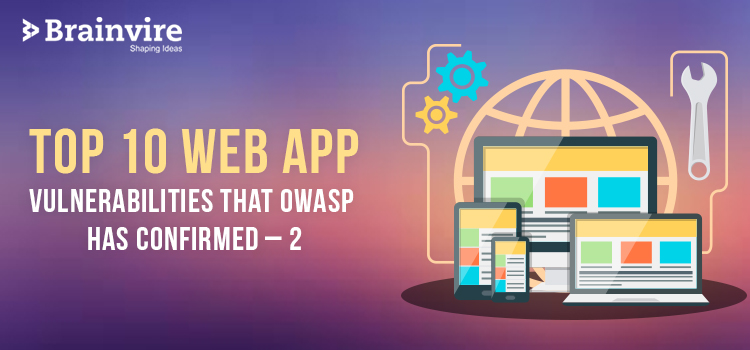
A lot has already been explained about OWASP testing from the ground up in the first series. It has alleviated the need to explain it once more.
In the previous blog, we have discussed the top 10 web app malware released by the OWASP testing guide that impacts the security of the website. But, only five were listed.
So, here we have come up with the rest 5 malware about which we have promised to illustrate in the next blog.
Take a quick look at the remaining 5 web app vulnerabilities:
Missing function level access control
Before making the function visible at the front-end, the web application always checks the function level access rights to verify that intended users are authentic or not.
But, the same function access control checks need to be performed at the server because if the unverified requests are accepted, then attackers will get a chance to gain unauthorized access to the functionality.
Security misconfiguration
During web development, perhaps the framework, web server, application server, platform and database server come with secure default. But, it’s not essential.
Sometimes, the security configuration needs to be defined and incorporated so that no adjustments will be made with the web app security. Moreover, you can upgrade all the software as security feature also get upgraded to the new version.
Dependency injections
There are some untrusted inputs or manipulated requests is sent to the interpreter as a command to be executed by the web app so that attacker will get an opportunity to access the unauthorized data.
There are various types of injection vulnerabilities such as SQL injection, Code injection, OS commanding, XML injection, LDAP injection, SSI injection, XPath injection, and buffer overflow, which becomes the reason of security breach.
Broken authentication
At the time of web development, the authentication, and session management functions when not implemented properly and contain flaws, the attackers will get the chance to put a hole in the web security using fake credentials and some tricks.
Ensure the best practices to implement the authentication and session management techniques so that no user credentials, session tokens, or keys can be exploited. Also, the security software like- AppScan can be leveraged to resolve the broken authentication problem.
Direct object reference- Not secured
When the web developers or website ask the users to provide values for certain parameters, and if the values are gathered and input without any access control check, the probability of the site to get hacked increases.
The reason is passing the malicious command to the website becomes easy as there is no protection over the data. With this hackers will get a chance to manipulate the data with illegal access.
Wrap up
Finally, you have the OWASP top-10 list of all the vulnerabilities that pop-up during different times, if during the web app development certain functionalities are not implemented correctly. Ensure all these won’t influence the website security. Moreover, you can also use advanced software to protect the website from the security threats or make the website secured. Happy web development!
Related Articles
-
Develop Robust API Roadmap – A Comprehensive Guide
If you work for a mobile app development company or are a mobile app developer, working around API must be a daily grind. This high-end technology is increasingly revolutionizing the
-
Simplify Ecommerce App’s Checkout Process Will increase your revenue. Here’s How!
This article is important for demanding e-commerce apps intended to help the organization in making a better checkout-flow. The Healthcare industry experienced that mobile e-commerce optimization drive is in, and
-
iPhone 6 Specs with New Business Opportunities for iPhone apps development
It’s time for a new Apple device and rumors are already floating in the mobile market about what this new device holds. There’s a lot of buzz and a lot



